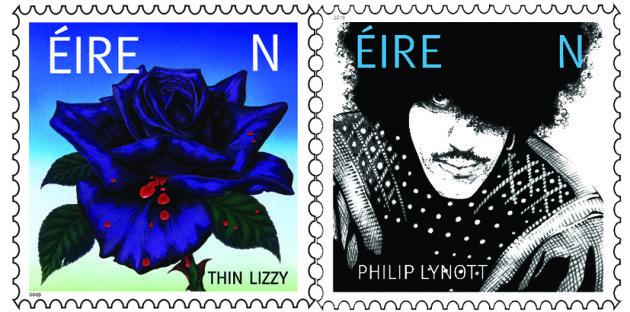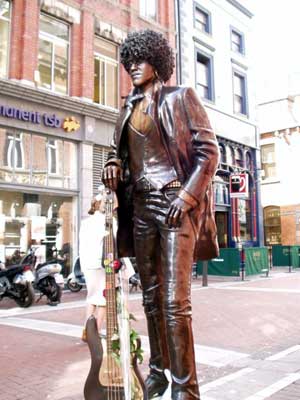Phil Lynott: Famous For Many Reasons
Irish Migration Studies in Latin America
Volume 4, Number 3 (July 2006)
Published by The Society for Irish Latin American Studies
John Horan
In view of the unique and colourful history of the ties between Ireland and Brazil that date back centuries, it is perhaps surprising that the most famous Irish-Brazilian was a mixed-race rock star from Dublin. Phil Lynott was one of Ireland’s first world-famous rock stars, and definitely the most famous black Irishman in the island’s history, long before the advent of a new era in the Republic that facilitated the immigration of people from various African nations from the 1990s. Lynott’s band, Thin Lizzy, was the first internationally successful Irish rock band, and Lynott himself was considered the biggest black rock star since Jimmy Hendrix.
Phil Lynott: THE ROCKER, a 2002 biography by Mark Putterford, begins with the sentence, “Phil Lynott was one of the most colorful and charismatic characters in the history of rock ‘n’ roll.” This sentence would be considered an understatement by those who knew him through all stages of his life. His family history was typical in some ways, but his mother’s personal history was anything but typical for Ireland in 1949, the year he was born.
Philomena Lynott was born in Dublin in 1930 to Frank and Sarah Lynott. She was the fourth of nine children, all of whom grew up in the working-class Crumlin district on the south side of Dublin. Economic hardships in the Republic prompted her to choose to move across the Irish Sea to Manchester to find work, while many of her friends went to Liverpool. Shortly after her arrival in Manchester, she was courted by a black Brazilian immigrant whose surname was Parris. To this very day, Philomena Lynott has never spoken publicly about her son’s father, so as to protect his privacy. She once said, “He was a fine, fine man, who did the decent thing and proposed marriage to me when I told him I was pregnant.” Philomena and her former boyfriend stayed in contact for five years after their son was born. However, when it became clear that marriage was no longer a possibility between the two, they drifted apart. It is said that Philip Lynott’s father returned to live in Brazil and started another family, which has always been the reason given for Philomena’s refusal to provide any information about the “tall, dark stranger” who was her son’s father, as she never wanted to disrupt his life with his new family. Several sources cite that the Brazilian made some level of financial contribution towards supporting his Irish son in the early years…
Read the entire article here.



